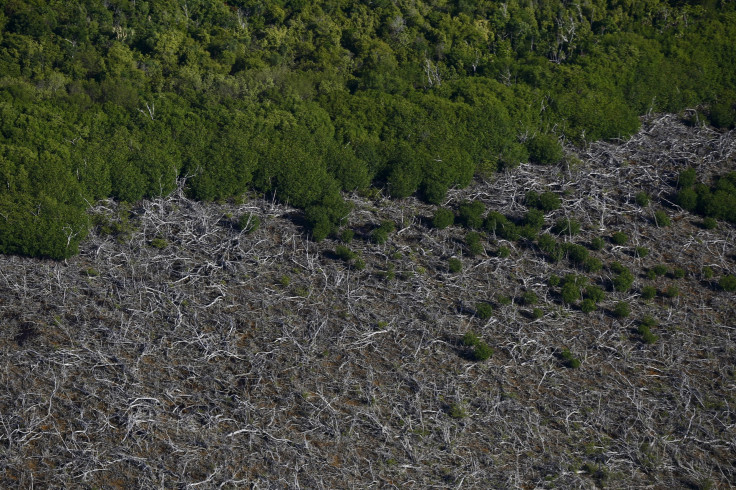600 Miles Of Mangrove Trees In Australia Killed By Temperature, Drought

The mysterious death of more than 600 miles of Australian mangrove trees in 2016 has finally been solved. The immense forests along the Gulf of Carpenteria were killed by the combined effects of a number of unusual climate and weather events.
An excessive drought, strangely warm temperatures and a unique El Nino situation that reduced sea levels all contributed to the forest's destruction, according to a study published in the Journal of Marine and Freshwater Research Tuesday.
Read: Whales Killed In Norway Are 90 Percent Female, Nearly All Pregnant
“Essentially, they died of thirst,” said Norman Duke, head of the Mangrove Research Hub at James Cook University in Queensland, Australia and the leader of the study, according to the Sydney Morning Herald.

The findings mean that mangroves are much more vulnerable to climate change than scientists previously thought.
Mangroves, shrubs and trees that thrive in saltwater, are essential to their environments. The more than 80 different species grow in areas with low oxygen soil, serving a variety of indispensable purposes. Mangrove forests protect shorelines from erosion by providing a bulwark against storms and waves. The trees also serve as a habitat for an abundance of sea life, including threatened species like green sea turtles and loggerhead turtles, while enhancing water quality by filtering out pollutants and trapping sediment.
Read: Ocean Temperatures Rising Faster Than Previously Thought
As a result, the Australian dieback could have catastrophic results including the loss of hundreds of millions of dollars in fishery profits, severe coastal erosion and degraded water quality.
Similar die-offs have been recorded in Florida, where mangroves are a key part of the ecosystem as well as a tourist attraction. The first such reports out of the state came in 1989, when scientists noted the trees progressively dying in the Florida Bay.
“The gulf dieback has been a wake-up call for action on shoreline monitoring,” said Duke. “We urgently need a national shoreline monitoring program commensurate with our global standing.”
© Copyright IBTimes 2025. All rights reserved.





















